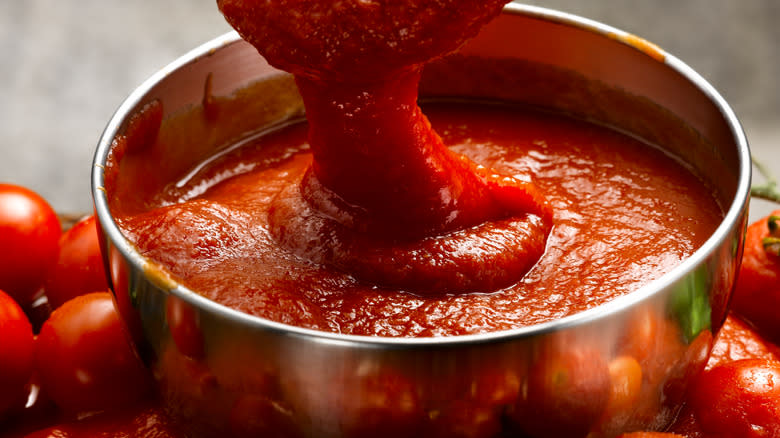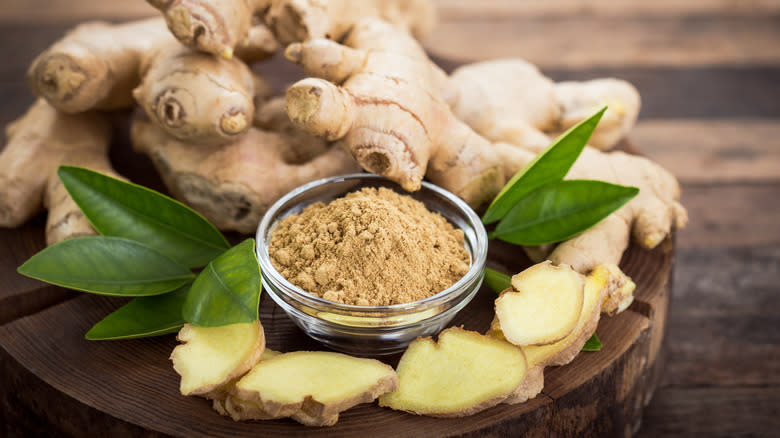Ginger Is The Unexpected Spice You Need For Tomato Sauce With Some Flair

The great thing about tomato sauce is there's no single way of making it. Make a pot of sauce quickly using canned tomatoes or labor in the kitchen, peeling, coring, and dicing fresh ones. There's also no hard and fast rule on what you can add to the sauce to give it your own spin. Use classic go-to herbs like oregano or try something more unconventional like fish sauce for a more complex flavor. One more unexpected spice that can give your sauce some flair? Ginger.
The ginger and tomato pairing isn't new. Different Asian cuisines have unlocked this combination's potency. Some examples are the ketchup substitute tomato chutney from India and faan ke ngao yok or Chinese beef tomato stir-fry. They combine the subtly sweet tanginess of tomatoes with ginger's lemon-like tang and peppery heat to create a richer, more complex flavor. Their combo also holds up well when eaten with something starchy like naan bread, rice, and, of course, pasta.
When added in the right amount, ginger can harmonize different flavors, just like it could 'harmonize' stomach upsets in various traditional medicines. Tomato sauce can be deliciously tart, but when it's too acidic, ginger has active compounds that can balance it. Some of them are the anti-inflammatory phytochemicals gingerols and shogaols, which give ginger its pungency, and zingerone, an antioxidant that brings out the spice's natural sweetness when it gets cooked or dried. Combined, they can moderate excessive acidity in tomato sauce while enhancing its sweet tanginess.
Read more: 26 Types Of Pasta Sauce Explained
Let Ginger's Flavor Harmonize With The Other Ingredients

A usual tip for cooking with ginger is to add it at the end of cooking, so its flavor comes through. But if you simply want it to taste richer with a delicate fieriness instead of being intensely gingery, throw ginger into the saucepan early to cook with the other spices. That way, when the tomatoes get added, they absorb the ginger's subtle heat, sweetness, and earthiness. These will blend well with the tomatoes' umami and light tartness, resulting in a sauce that has a wonderful layering of flavors, plus palate-pleasing warmth and aroma.
Once you've spooned it over pasta, top your ginger-tomato sauce with half a tablespoon of fresh minced ginger. Since it won't get cooked anymore, it'll simply add a touch of fragrant piquancy to the dish. Using jarred sauce? Sautee your ginger in olive oil a few minutes and then add the sauce to warm on the stove.
Freshly grated ginger is the best to use for making tomato sauce richer and brighter. It's more complex-tasting than dried, and it also pleasantly contributes to the texture. Two tablespoons is sufficient for two cups of peeled and diced tomatoes or a 28-ounce can of whole peeled ones. You can also use dried ginger, but consider its more concentrated flavor when using it as a substitute. Start with ⅛ teaspoon for every teaspoon of fresh ginger then build on the amount according to your taste as you develop your own recipe.
Read the original article on Tasting Table

